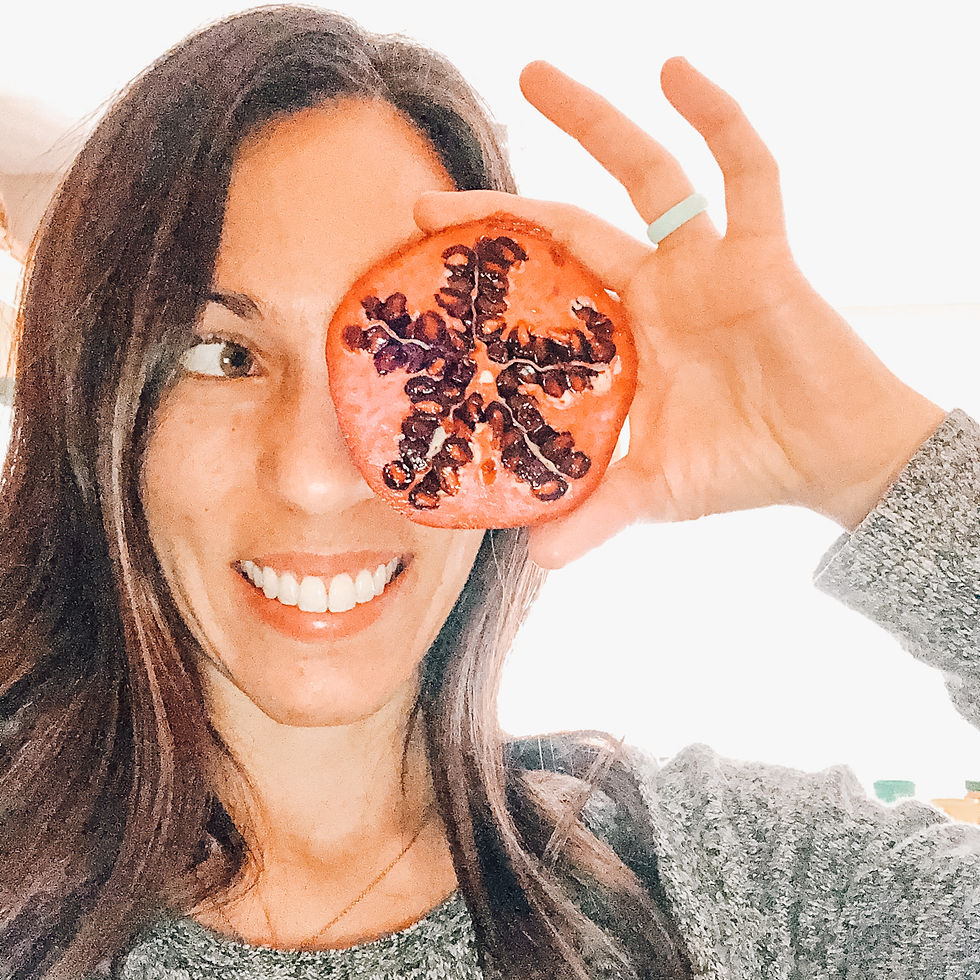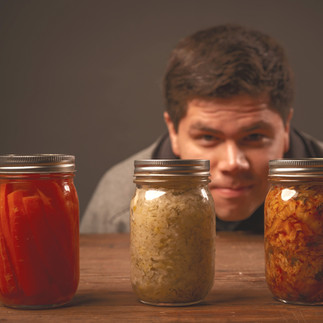Eye Food Series Part 3: Top 10 "Super Eye Foods" You are Likely Missing from Your Diet
- Meagan Herring, OD, FAAO

- Nov 7, 2021
- 4 min read

As a holistic optometrist, I counsel patients daily on their nutritional needs, particularly as it relates to their eye and brain health.
So I was inspired to write a 3-part series on my eye-specific nutritional recommendations, this one being the third of three posts. You can find the first discussion on current eye food recommendations here, in a separate post.
This post will focus solely on key superfoods that might be overlooked due to their unconventional nature.
Nevertheless, they rival (if not surpass) their conventional, eye-healthy counterparts on the nutrient density scale, making them crucial for optimal wellness and healthy eyesight.
Call them primal, paleo, pegan or ancestral, many of the superfoods I'm about to share are what our ancestors consumed pre-agricultural revolution.
And according to DNAfit.com, these foods are a "better fit" for our genetic makeup than the Standard American Diet (said to be SAD), therefore allowing us to thrive instead of survive in this post-historic era.
But before you skip down, see if you can guess three of them...
Here are my top 10 superfoods (in no particular order) missing from a conventional eye foods diet. How many of them do you consume or advocate to your patients?
1. Beef liver and other organ meats
One of the most nutrient dense foods on Earth consumed regularly by our ancestors
Liver is rich in vitamin A (~500% RDA in 100g)
Did you know? Organ meats generally have 10-100x more nutrients than their meat counterpart!
Tip: sauté small pieces in coconut oil with a sprinkle of himalayan sea salt and consume with eggs or avocado; also tastes great in paté
2. Wild Greens
Higher nutrient content compared to most cultivated greens
Includes dandelion greens, sorrel, lambs quarters, stinging nettle and others
Delicious in soups, salads, smoothies and scrambles
Tip: forage in the wild, plant in a kitchen garden or source at local market/health food store
3. Ghee
Essentially butter with the milk solids removed
Rich in vitamin A, (a fat-soluble vitamin), + healthy, omega-3 fats which promote absorption of vitamin A
Good replacement for butter in cooking or baking with a nuttier flavor
4. Kombucha
Fermented sweet tea that is rich in polyphenols important in protecting the body and eyes from oxidative stress
May help to control diabetes, thereby having a direct effect on the retina as a protection from diabetic retinopathy
Superior health elixir packed with B vitamins, enzymes + probiotics to support the gut, brain and eye posing a host of benefits
Tip: kombucha is everywhere nowadays; for brews highest in beneficial microbes, source from a local brewer or try your hand at brewing your own
5. Pea shoots + Microgreens
Pea shoots contain 38 minerals and all amino acids
Good source of bioavailable protein plus Vitamins A, B, C, E + K
Helps manage diabetes-related complications
High in cancer-fighting phytonutrients
6. Sauerkraut + Fermented Veggies
Probiotic-rich foods which support human microbiomes, including the eye microbiome
Contain vitamins A, C, K + some B's, iron, manganese, copper, sodium, magnesium, and calcium
Reduce risk of AMD and cataracts
*Not recommended for patients with SIBO or candida overgrowth
7. Salmon Roe (wild caught)
Extremely rich in astaxanthin, (known as the "king of carotenoids", because it supports healthy eyesight and helps prevent against cataracts, AMD and glaucoma)
Good source of vitamins A, B12, D + E, and the Omega 3's, EPA + DHA
Easily digestible, clean protein that may be added to salads or garnish to other dishes; makes a great snack when filled inside half an avocado
8. Spices and Herbs
Highest ORAC foods on earth, (ORAC = Oxygen Radical Absorbance Capacity is a measure of a food's inherent antioxidant capacity or it's ability to fight off free radicals and hence aging + disease.)
Sumac, turmeric, oregano, cloves + cinnamon are some of the highest ORAC spices
Provide a boost of flavor without chemicals or added sugars
Concentrated as essential oils (practice caution when adding to food dishes: a little goes a LONG way - be sure to also use food grade.)
Tip: the best herbs/spices are the ones you grow yourself.
9. Goji Berries
Richer in the nutrients (carotenoids, lutein + zeaxanthin, vitamins A + C, copper, selenium, zinc + iron) more so than egg yolks and other berry superfoods
One of highest ORAC, whole food sources
Plant-based protein source containing 11 amino acids
Often eaten dried in trail mix and added to teas, salads or smoothie bowls
Also available as a puree form (ie. NingXia Red)
10. Bone Marrow and Bone Broth
marrow is a modern delicacy
collagen-rich (bioavailable form) which supports corneal + crystalline lens health
rich in glycine + glucosamine for gut + joint health
has anti-inflammatory + immune boosting benefits
Though they do not get the spotlight they deserve, these super-eye-foods are considered mainstream within the biohacking community and should be included in every healthy eye foods plan.

More than their abilities to merely support health, they heal the body from within, thereby providing super-wellness and resiliency. And when we heal the body from the inside out, healthy organs (including the eyes) results.
If you like this information, be sure to bookmark this page for future reference and even share with a friend/colleague.
References
Grossman, M and Edson, M. The Paleo Diet and Eye Health. Natural Eye Care. https://www.naturaleyecare.com/blog/paleo-diet-eye/
Kresser, C. (2018, September 27). What is the Optimal Human Diet? Retrieved on October 11, 2021 from https://chriskresser.com/what-is-the-optimal-human-diet/
(N.a.) (N.d.) Everything you Need to Know About the Paleo Diet. Dnafit.com. Retrieved on October 12 from https://www.dnafit.com/advice/nutrition/everything-you-need-to-know-about-the-paleo-diet.asp
Ozkan, J and Willcox, MD. (2019, February 4). The Ocular Microbiome: Molecular Characterisation of a Unique and Low Microbial Environment. Current Eye Research, 2019 Jul;44(7):685-694. https://doi.org/10.1080/02713683.2019.1570526





















Comments